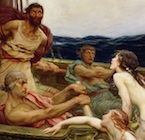wdolson
Posts: 10398
Joined: 6/28/2006
From: Near Portland, OR
Status: offline

|
quote:
ORIGINAL: bomccarthy
I checked out Car and Driver's story on their annual Lightning Lap at Virginia International Raceway - they included a Tesla Model S P85D. They charged the battery to 100% and ran one lap - the car went into reduced power mode 40 seconds into the lap (which they eventually clocked at 3:17.4) to protect the battery from excessive heat. Apparently, this is normal when performance testing a Tesla. As a result, the Tesla recorded the slowest lap time. From an enthusiast's standpoint, that seems to be the main problem with the current generation of electric cars - they can't sustain spirited driving for very long. In addition, their weight puts them at a disadvantage when compared to internal combustion sporty cars. Even with a low center of gravity, a heavy car does not change direction as easily as a light car and isn't as responsive in corners.
Here is the web article and video of the Tesla lap (check out the other cars tested as well): http://www.caranddriver.com/features/tesla-model-s-p85d-at-lightning-lap-2016-feature
Tesla won't be entering NASCAR any time soon. If you drive over 100 mph for long stretches, a Tesla probably isn't for you, but the only place in the world you can do that legally is the Autobahn in Germany. There are some stretches of interstate in the middle of nowhere you can get away with it, but for the vast majority of people driving the way people drive, you have enough performance for what you want to do. As I said, I drove 80 pretty consistently in northern end of the Sacramento Valley in California and the car didn't have any overheating problems. The entire trip I was on the fast side for most of the traffic on I-5, and there were no limitations on power. On the stretch from Weed to the CA-OR border northbound it was after dark and there were no other cars visible for most of that stretch, I was over 90 for a fair bit of it and didn't slow down going up the Siskuyous to cross the 4000 foot pass at the border.
Ultimately there is no overcoming the momentum created by mass, but having it as low as it is sure helps.
Today's li-ion batteries have a liquid electrolyte, but several different labs are working on solid state batteries which have a dry electrolyte. It was discovered just a few months ago that the material used for disposable contact lens makes a great electrolyte for dry lithium batteries. A dry electrolyte also allows for a solid lithium anode making the energy density 2-3 times what it is now. Solid state batteries are showing promise and will probably be in full production by the middle of the next decade. When that happens, battery packs will be getting smaller and lighter.
Tesla also plans to build a second generation Roadster at some point. It will be a smaller, more nimble car than the current cars.
I would recommend scheduling a test drive just to get a feel for how the Model S handles. I believe you live in Los Angeles area where there are 12 Tesla stores, more than just about anyplace else in the world (the entire Portland area has one on the opposite corner of the metro area from us). When I did the test drive they took me on a short stretch of curvy road where I really threw it into the corners. I was suitably impressed but I'm not a sports car guy either. For a 4 door sedan it's incredibly impressive.
Bill
_____________________________
WitP AE - Test team lead, programmer  |
 Printable Version
Printable Version
























 New Messages
New Messages No New Messages
No New Messages Hot Topic w/ New Messages
Hot Topic w/ New Messages Hot Topic w/o New Messages
Hot Topic w/o New Messages Locked w/ New Messages
Locked w/ New Messages Locked w/o New Messages
Locked w/o New Messages Post New Thread
Post New Thread